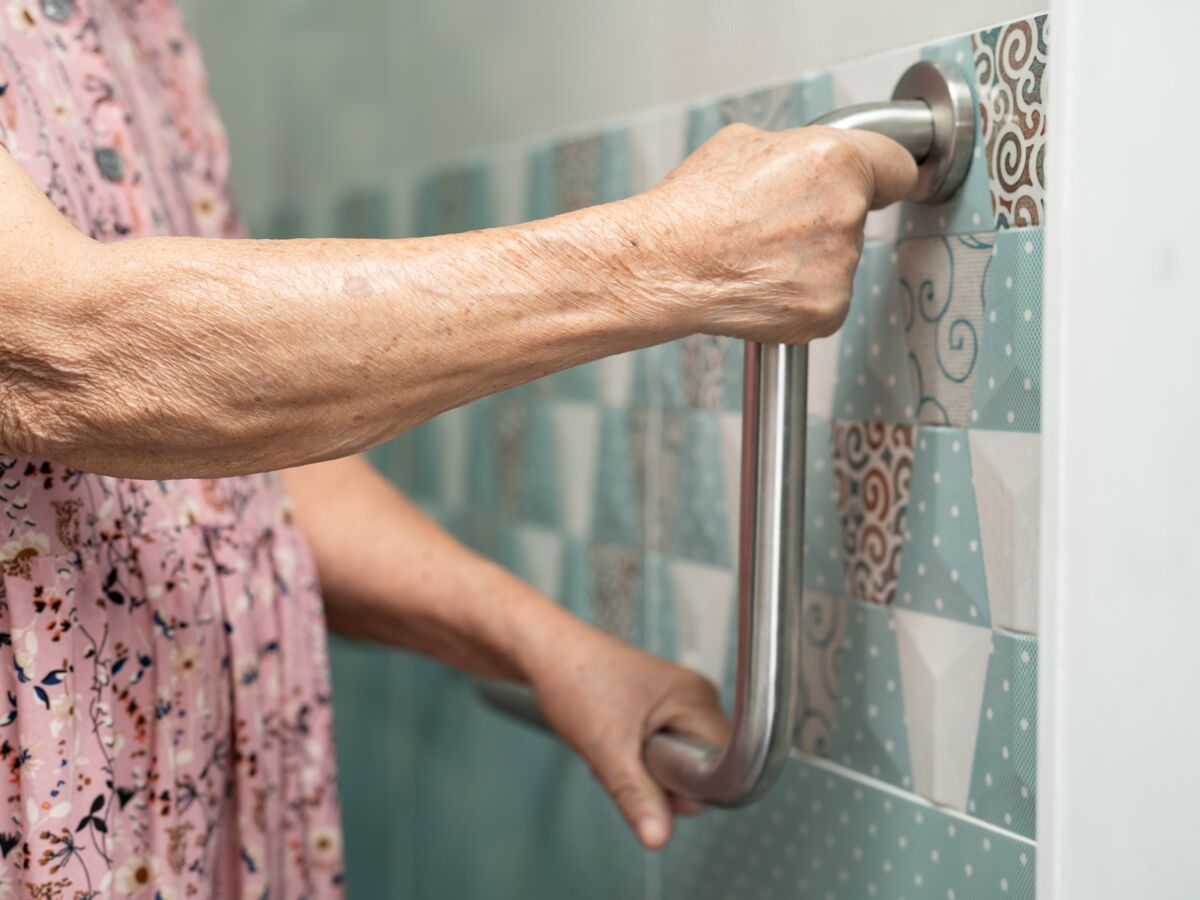According to figures from the Ministry of Health, there are 2 million falls among people aged over 65 each year in France. Falls which are responsible for more than 130,000 hospitalizations and 10,000 deaths. The ChuPADom survey by Santé Publique France reveals that nearly 15% of these falls occur during washing or hygiene care. It is therefore crucial to rethink the organization of sanitary facilities in the homes of the elderly to prevent the risk of falls.
Bathroom for the elderly: start with an inventory
Before embarking on major, costly work, you must think about the real needs of the person and the essential arrangements. It is not always necessary to completely redo the bathroom; installing a few accessories is sometimes enough to secure the room and considerably reduce the risk of falls.
The first question to ask is obviously that of the location of the bathroom within the accommodation. Even if it is correctly fitted out, a bathroom located on the upper floor of a house is useless when the elderly person has great difficulty moving around or can no longer climb the stairs without risk. Another very important question: does the bathroom have a shower or a bathtub? Is it possible to reorganize one or the other to make it more secure?
Good to know. An occupational therapist can help you with these reflections. As the National Information Portal for the elderly reminds us, the occupational therapist intervenes in particular in the field of prevention by proposing the necessary adjustments to compensate for the loss of autonomy and create a safe living environment.
What are the essential fittings in the bathroom?
Without initiating very major work straight away, it is possible to put in place certain small things to secure the bathroom and toilets. Grab bars are, for example, essential: near the toilet, near the shower, in the shower or the bathtub itself. This significantly reduces the risk of falling or slipping. For even greater safety, it is strongly recommended to install anti-slip strips on the floor, directly on the bathroom covering. We also choose a non-slip bath mat, or add strips to prevent it from slipping. A suction mat must also be installed in the shower or bathtub.
Shower or bathtub: which is the best solution for the elderly?
This question is obviously central. It is possible to make a traditional bathtub more secure by adding a step, or a shower by installing a fixed seat, but where possible, it is preferable to invest in a walk-in bathtub or a secure walk-in shower. This work obviously has a cost, so you must request several quotes and discuss the technical solutions proposed with professionals. The size of the bathroom is particularly important to take into account. The quote must be as precise as possible (size of the shower projection, price of the seat or grab bar, exact dimensions of the device, etc.)
Arranging the homes of the elderly: what help is available?
Elderly people losing their independence (owners or tenants) can benefit from a tax credit to carry out development work within their accommodation (for example the installation of an extra-flat shower tray, toilets with washing and drying system etc.). The tax credit covers 25% of expenses, within the limit (over 5 years) of 5,000 euros for a single person and 10,000 euros for a couple.
The mutual insurance company and the pension fund are also likely to provide assistance in financing the work.
Attentionif you are a tenant it is essential to obtain authorization from your lessor to carry out this work at your expense.
Sources:
National information portal for elderly people and their loved ones
Read also :
⋙ Fall prevention: the 6 essential arrangements to install at home
⋙ Falls: what to do if it happens to you?
⋙ Meals at home for the elderly: how to benefit from this assistance?
